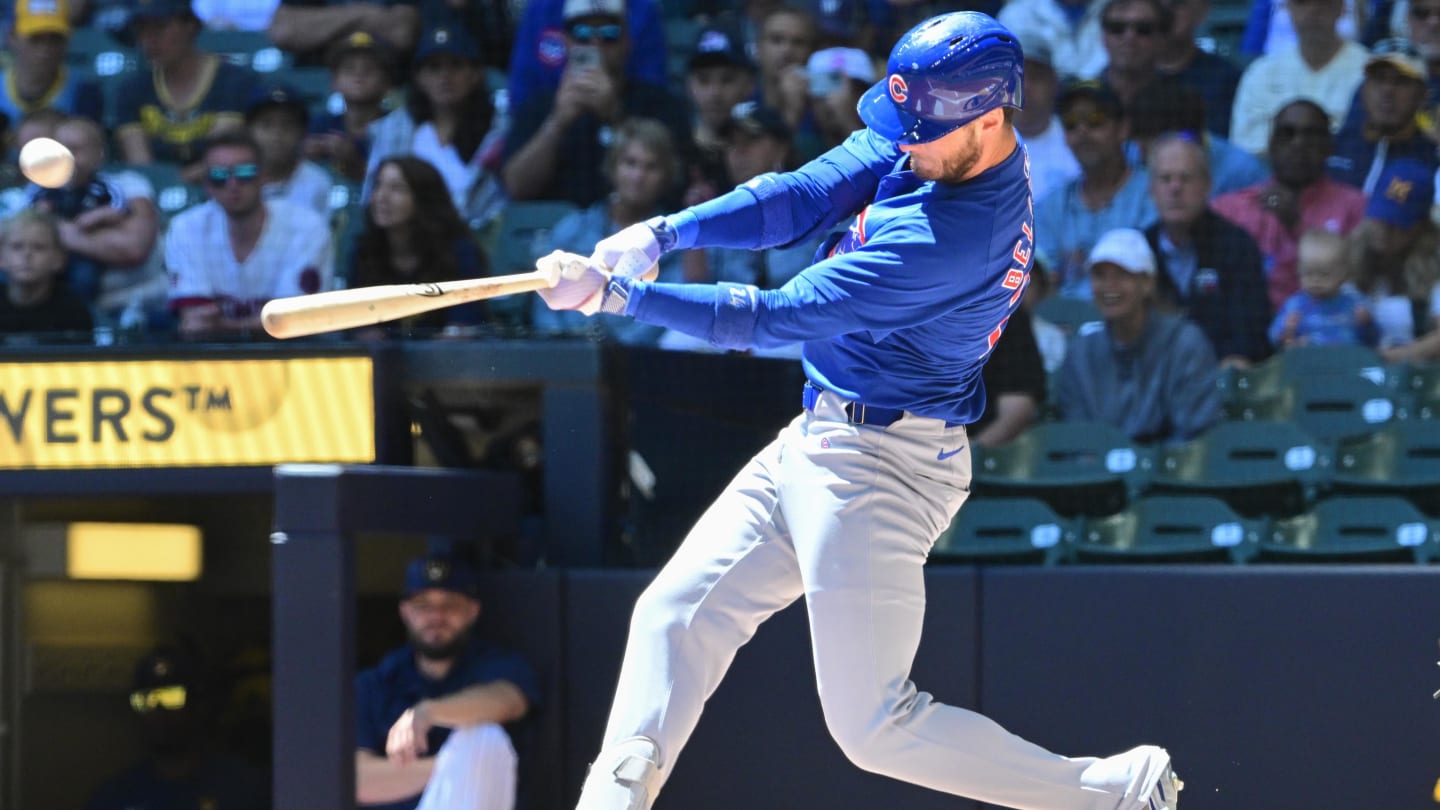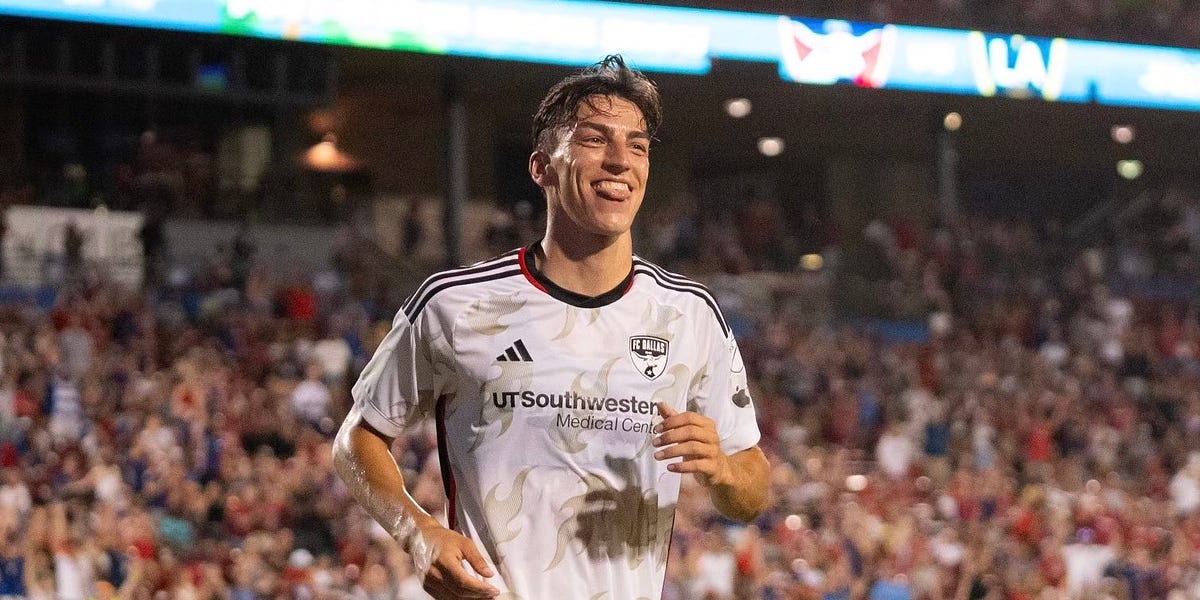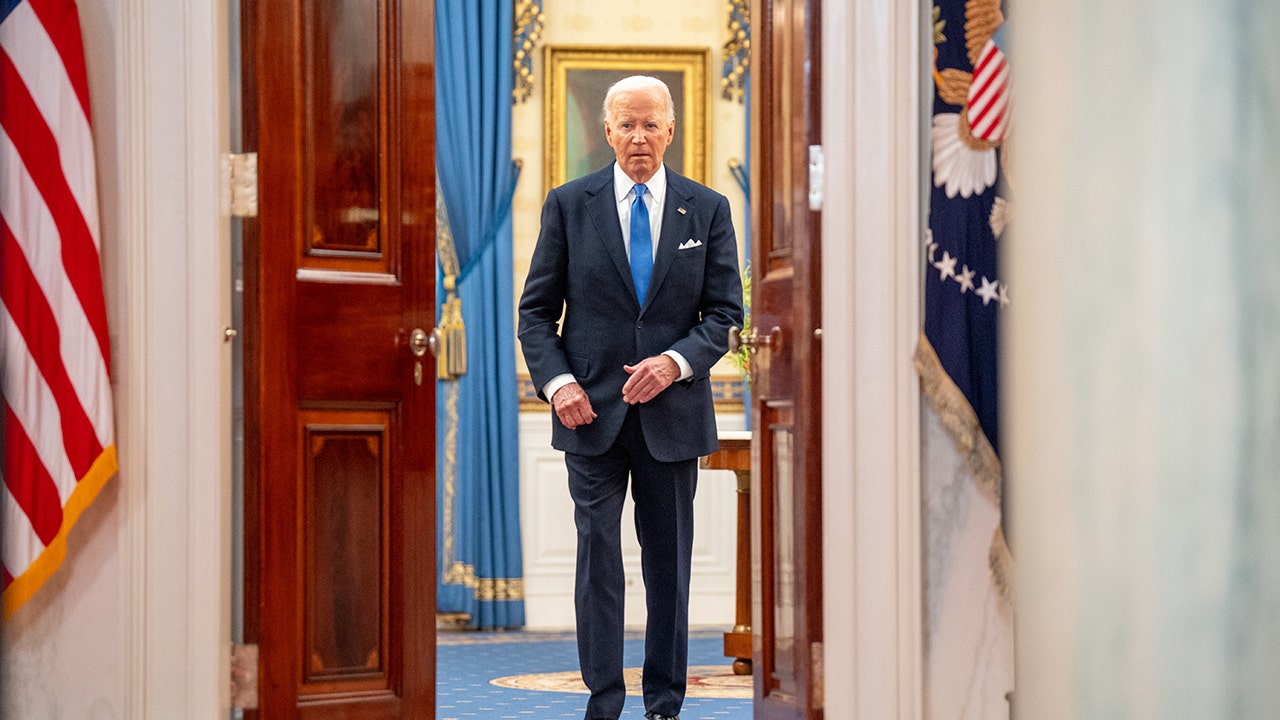New York
Eric Adams Promised to Be the Bus Mayor. Riders Are Still Waiting.

Early in Mayor Eric Adams’s first term, he rode a B41 bus through Brooklyn to cement his commitment to speed up New York City’s notoriously slow buses, part of his campaign pledge to be an advocate for bus riders and bicyclists.
Bus riders thought they had their champion. A riders group presented Mr. Adams that day with a jacket that read “N.Y.C. Bus Mayor” across the back and celebrated his vow to create 150 miles of new dedicated bus lanes in four years.
Then politics interfered.
The city, which has the slowest buses in the nation — averaging eight miles per hour — is expected to add as few as 10 miles of bus lanes this year. In 2022, Mr. Adams’s first year as mayor, just shy of a dozen miles were added.
The Adams administration is drawing up plans for new bus lanes on half a dozen more routes, including a three-mile proposal for a busy corridor along Fordham Road in the Bronx. More commuters rely on the bus in the Bronx, per capita, than in any other borough, and 60 percent of households do not own a car, according to analyses of Census Bureau data by city agencies.
But now that plan seems in limbo, after local businesses objected and one of the mayor’s political allies, Representative Adriano Espaillat, raised doubts.
Richard Davey, the president of New York City Transit who oversees the city’s vast subway and bus system, said in an interview that Mr. Adams had been a “huge transit mayor for us,” citing the mayor’s focus on subway crime and support for discount MetroCards for poor New Yorkers.
But the Metropolitan Transportation Authority is powerless to speed up its buses unless the city creates more bus lanes.
“The math won’t add up by the end of the mayor’s four years,” Mr. Davey said on Monday as he rode a Bx36 bus through the Bronx.
Transit advocates worry that other bus-friendly proposals could be in jeopardy, such as a major bus-lane plan for Flatbush Avenue in Brooklyn that travels through the heart of neighborhoods that Mr. Adams won in 2021. Rita Joseph, the councilwoman who represents Flatbush, said that she supports bringing a bus lane to her district.
“I have heard from my neighbors — both for and against, and now as an elected leader it is my responsibility to work with my colleagues to find a compromise that everyone can agree on,” Ms. Joseph said in a statement.
With New York City mired in traffic gridlock and grappling with the impact of climate change, giving priority to buses seems an obvious solution. London and Beijing have sped up their fleets by giving more street space to buses. But in New York, the voices of drivers and business leaders are often louder than those of the city’s 1.2 million daily bus riders, many of them working-class New Yorkers.
A spokesman for the mayor, Charles Kretchmer Lutvak, said in a statement that the Adams administration had improved commute time on many bus routes, including on Northern Boulevard in Queens, and “continues to do everything we can to meet the ambitious goals that the mayor laid out in his campaign.”
But as Mr. Adams, a Democrat, gears up to run for re-election in 2025, his administration has been deferential toward powerful interests and local leaders.
One of the mayor’s closest aides, Ingrid Lewis-Martin, has opposed street redesign projects and overrode the transportation commissioner in February 2022 to allow cars back onto an eight-block stretch in Fort Greene, Brooklyn, reserved for pedestrians.
Ms. Lewis-Martin also raised concerns about two bike lane plans in Brooklyn: one on McGuinness Boulevard in Greenpoint opposed by Gina and Tony Argento, influential Democratic donors to Mr. Adams who own a local film production company; and another on Ashland Place in Fort Greene opposed by Two Trees Management, a major real estate firm led by an Adams donor, according to two people who were familiar with the matter.
Mr. Lutvak denied that Ms. Lewis-Martin had meddled in the Ashland Place project and said that it was moving forward. On Wednesday, he said the city was also proceeding with a scaled-back version of the McGuinness Boulevard project, a development first reported by Gothamist.
Oswald Feliz, a local City Council member who is part of Mr. Espaillat’s so-called Squadriano political alliance, is fighting the proposal for Fordham Road, which has 85,000 daily bus riders. He, along with other opponents like the Bronx Zoo and Fordham University, fear that the plan would snarl car traffic and push it to surrounding streets because cars would be confined to one lane in each direction. Less than 6 percent of visitors who drive to the zoo and other nearby attractions use Fordham Road to access it, Department of Transportation data shows.
Mr. Feliz would rather have the city repaint the existing bus lanes red and install more traffic enforcement cameras.
“We would strongly support a busway or offset bus lanes in neighborhoods where they are necessary for faster buses; but what Fordham buses need is a fixing of current bus lanes,” he said in a statement.
Mr. Espaillat discussed the Fordham Road plan in a phone call last month with officials from the M.T.A., the governor’s office and the city’s Transportation Department and told them it was clear it did not have local support, according to a person who was on the call and granted anonymity to discuss a sensitive matter. The call was first reported by the website Streetsblog.
A spokeswoman for Mr. Espaillat, who is Dominican American and a key ally in Mr. Adams’s coalition of Black and Latino leaders, said in a statement that he backed local officials “to make the best determination in the interests of city residents.” She noted Mr. Espaillat’s past support for faster bus routes when he was a state lawmaker.
Mr. Davey, noting that the city Transportation Department was short-staffed, said he was so eager to help the city start construction on the Fordham Road project this year that “I’ll go out and paint, personally, a bus lane.”
Opponents of the Fordham Road plan include a business group led by Peter Madonia, a bakery owner and former chief of staff to Mayor Michael R. Bloomberg, and donors to Mr. Adams such as John Calvelli, executive vice president of the Bronx Zoo, and Marc Jerome, president of Monroe College.
The corridor was originally expected to become a busway, like the one on 14th Street in Manhattan that bars almost all through traffic except for buses and commercial trucks and has been shown to improve service. After a stretch of Main Street in Flushing, Queens, was turned into a busway in 2021, rush-hour bus speeds rose by 50 percent. A new compromise proposal would add an “offset lane” for buses in the middle of Fordham Road, allowing for a parking and loading lane next to the curb.
A letter to the mayor from Mr. Feliz and three state lawmakers last month said the new plan would “negatively impact our thriving economic, social, and health ecosystem,” which includes Little Italy on Arthur Avenue in the Bronx and “destinations for visitors and others to the Bronx from all over the world.”
Transit advocates have pushed back, sometimes in eye-catching ways: A giraffe costume was deployed to draw attention to the Bronx Zoo’s opposition.
“Riders are demanding that the mayor keep his promise, and nowhere is that promise more significant — more meaningful — than on Fordham Road,” said Danny Pearlstein, a spokesman for Riders Alliance, a transit advocacy group.
On a scorching hot day last week, Jennifer Reyes, 18, waited for the Bx12 bus on Fordham Road, which she takes to school, Marine training and a job as a cashier at a fried chicken restaurant in Times Square. Ms. Reyes, a lifelong Bronx resident, said buses often arrive late and are too packed to board, so she leaves home early to make up for frequent delays.
“I know it’s going to, like, make people mad,” Ms. Reyes said of the proposal to prioritize buses. “But us students, workers, we need to get to our places.”
Milagros Matías, a home care worker, said she was frustrated by the number of delivery vehicles clogging the street and hoped the city would move quickly to clear the way for buses.
“There needs to be more space for public transit,” Ms. Matías, 54, said in Spanish. “This mode of transportation is essential.”
Jeffery C. Mays contributed reporting.

New York
We Counted 22,252 Cars to See How Much Congestion Pricing Might Have Made This Morning

Today would have been the first Monday of New York City’s congestion pricing plan. Before it was halted by Gov. Kathy Hochul, the plan was designed to rein in some of the nation’s worst traffic while raising a billion dollars for the subway every year, one toll at a time.
A year’s worth of tolls is hard to picture. But what about a day’s worth? What about an hour’s?
To understand how the plan could have worked, we went to the edges of the tolling zone during the first rush hour that the fees would have kicked in.
Here’s what we saw:
Video by Noah Throop/The New York Times; animation by Ruru Kuo/The New York Times
You probably wouldn’t have seen every one of those cars if the program had been allowed to proceed. That’s because officials said the fees would have discouraged some drivers from crossing into the tolled zone, leading to an estimated 17 percent reduction in traffic. (It’s also Monday on a holiday week.)
The above video was just at one crossing point, on Lexington Avenue. We sent 27 people to count vehicles manually at four bridges, four tunnels and nine streets where cars entered the business district. In total, we counted 22,252 cars, trucks, motorcycles and buses between 8 a.m. and 9 a.m. on Monday.
We wanted to see how the dense flow of traffic into the central business district would have generated money in real time.
Though we can’t know that dollar amount precisely, we can hazard a guess. Congestion pricing was commonly referred to as a $15-per-car toll, but it wasn’t so simple. There were going to be smaller fees for taxi trips, credits for the tunnels, heftier charges for trucks and buses, and a number of exemptions.
To try to account for all that fee variance, we used estimates from the firm Replica, which models traffic data, on who enters the business district, as well as records from the Metropolitan Transportation Authority and city agencies. We also made a few assumptions where data wasn’t available. We then came up with a ballpark figure for how much the city might have generated in an hour at those toll points.
The total? About $200,000 in tolls for that hour.
Note: The Trinity Place exit from the Brooklyn-Battery Tunnel, which would have been tolled, is closed at this hour.
It’s far from a perfect guess. Our vehicle total is definitely an undercount: We counted only the major entrances — bridges, tunnels and 60th Street — which means we missed all the cars that entered the zone by exiting the Franklin D. Roosevelt Drive or the West Side Highway.
And our translation into a dollar number is rough. Among many other choices we had to make, we assumed all drivers had E-ZPass — saving them a big surcharge — and we couldn’t distinguish between transit buses and charter buses, so we gave all buses an exemption.
But it does give you a rough sense of scale: It’s a lot of cars, and a lot of money. Over the course of a typical day, hundreds of thousands of vehicles stream into the Manhattan central business district through various crossings.
Trips into tolling district, per Replica estimates Note: Data counts estimated entrances on a weekday in spring 2023. Source: Replica.
Queens-Midtown Tunnel
50,600
Lincoln Tunnel
49,200
Williamsburg Bridge
27,900
Manhattan Bridge
24,000
Brooklyn-Battery Tunnel
23,100
Queensboro Bridge
21,700
Brooklyn Bridge
17,100
Holland Tunnel
15,400
All other entrances
118,000
Total
347,000
The tolling infrastructure that was installed for the program cost roughly half a billion dollars.
The M.T.A. had planned to use the congestion pricing revenue estimates to secure $15 billion in financing for subway upgrades. Many of those improvement plans have now been suspended.
Methodology We stationed as many as five counters at some bridges and tunnels to ensure that we counted only cars that directly entered the tolling zone, not those that would have continued onto non-tolled routes.
Our count also excluded certain exempt vehicles like emergency vehicles.
We used estimates of the traffic into the district to make a best guess at how many of each kind of vehicle entered the zone. Most of our estimates came from the traffic data firm Replica, which uses a variety of data sources, including phone location, credit card and census data, to model transportation patterns. Replica estimated that around 58 percent of trips into the central business district on a weekday in spring 2023 were made by private vehicles, 35 percent by taxis or other for-hire vehicles (Uber and Lyft) and the remainder by commercial vehicles.
We also used data on trucks, buses, for-hire vehicles and motorcycles from the M.T.A., the Taxi and Limousine Commission and the Department of Transportation.
For simplicity, we assumed all vehicles would be equally likely to enter the zone from 8 a.m. to 9 a.m. as they would be in any other hour. We could not account for the other trips that a for-hire vehicle might make once within the tolled zone, only the initial crossing. And we did not include the discount to drivers who make under $50,000, because it would kick in only after 10 trips in a calendar month.
New York
Transcript of Trump Manhattan Trial, May 30, 2024

-
Jury Deliberation Re-charge
SUPREME COURT OF THE STATE OF NEW YORK
COUNTY OF NEW YORK CRIMINAL TERM
-
-
PART: 59
Χ
THE PEOPLE OF THE STATE OF NEW YORK,
-against-
DONALD J. TRUMP,
DEFENDANT.
BEFORE:
Indict. No.
71543-2023
CHARGE
4909
FALSIFYING BUSINESS
RECORDS 1ST DEGREE
JURY TRIAL
100 Centre Street
New York, New York 10013
May 30, 2024
HONORABLE JUAN M. MERCHAN
JUSTICE OF THE SUPREME COURT
APPEARANCES:
FOR THE PEOPLE:
ALVIN BRAGG, JR., ESQ.
DISTRICT ATTORNEY, NEW YORK COUNTY
One Hogan Place
New York, New York 10013
BY:
JOSHUA STEINGLASS, ESQ.
MATTHEW COLANGELO,
ESQ.
SUSAN HOFFINGER, ESQ.
CHRISTOPHER CONROY, ESQ.
BECKY MANGOLD, ESQ.
KATHERINE ELLIS, ESQ.
Assistant District Attorneys
BLANCHE LAW
BY:
TODD BLANCHE, ESQ.
EMIL BOVE, ESQ.
KENDRA WHARTON, ESQ.
NECHELES LAW, LLP
BY: SUSAN NECHELES, ESQ.
GEDALIA STERN, ESQ.
Attorneys for the Defendant
SUSAN PEARCE-BATES, RPR, CSR, RSA
Principal Court Reporter
LAURIE EISENBERG, RPR, CSR
LISA KRAMSKY
THERESA MAGNICCARI
Senior Court Reporters
Susan Pearce-Bates, RPR, CCR, RSA
Principal Court Reporter
New York
Transcript of Trump Manhattan Trial, May 29, 2024

SUPREME COURT OF THE STATE OF NEW YORK
COUNTY OF NEW YORK CRIMINAL TERM
-
THE PEOPLE OF THE STATE OF NEW YORK,
PART: 59
Indict. No.
71543-2023
CHARGE
-against-
DONALD J. TRUMP,
DEFENDANT.
BEFORE:
4815
FALSIFYING BUSINESS
RECORDS 1ST DEGREE
JURY TRIAL
X
100 Centre Street
New York, New York 10013
May 29, 2024
HONORABLE JUAN M. MERCHAN
JUSTICE OF THE SUPREME COURT
APPEARANCES:
FOR THE
PEOPLE:
ALVIN BRAGG, JR.,
ESQ.
DISTRICT ATTORNEY, NEW YORK COUNTY
One Hogan Place
New York, New York 10013
BY:
JOSHUA STEINGLASS, ESQ.
MATTHEW COLANGELO,
ESQ.
SUSAN HOFFINGER, ESQ.
CHRISTOPHER CONROY, ESQ.
BECKY MANGOLD, ESQ.
KATHERINE ELLIS, ESQ.
Assistant District Attorneys
BLANCHE LAW
BY:
TODD BLANCHE, ESQ.
EMIL BOVE, ESQ.
KENDRA WHARTON, ESQ.
NECHELES LAW, LLP
BY: SUSAN NECHELES, ESQ.
Attorneys for the Defendant
SUSAN PEARCE-BATES, RPR, CSR, RSA
Principal Court Reporter
LAURIE EISENBERG, RPR, CSR
LISA KRAMSKY
THERESA MAGNICCARI
Senior Court Reporters
Susan Pearce-Bates,
RPR, CCR, RSA
Principal Court Reporter
-

 News1 week ago
News1 week agoToplines: June 2024 Times/Siena Poll of Registered Voters Nationwide
-

 Politics1 week ago
Politics1 week agoPopular Republican and Trump running mate contender makes first Senate endorsement in 2024 races
-

 Politics1 week ago
Politics1 week agoFox News Politics: Trump Ungagged…Kinda
-

 News1 week ago
News1 week agoIowa floodwaters breach levees as even more rain dumps onto parts of the Midwest
-

 Politics1 week ago
Politics1 week agoMike Kennedy advances past crowded GOP primary to secure nomination for open Utah House seat
-

 Politics1 week ago
Politics1 week agoThe many faces of Donald Trump from past presidential debates
-

 News1 week ago
News1 week agoNew Jersey gamer flew to Florida and beat fellow player with hammer, say police
-

 News5 days ago
News5 days agoVideo: How Blast Waves Can Injure the Brain














